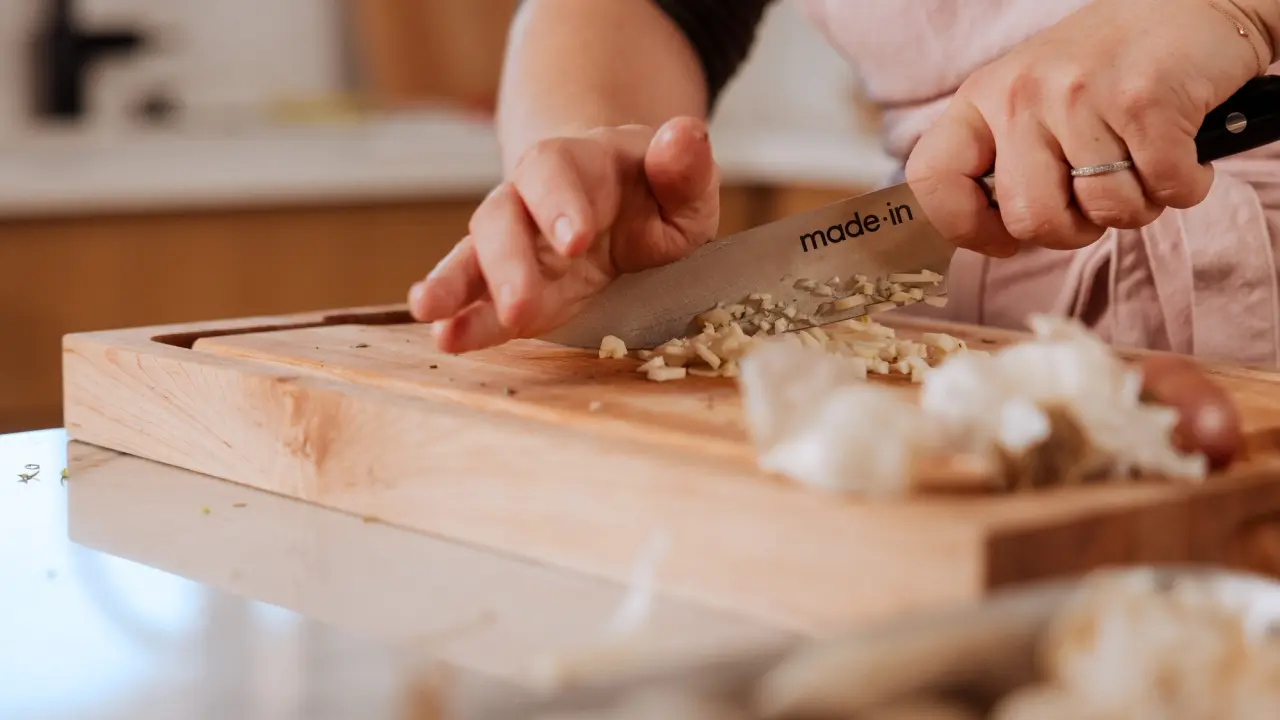Buying your first “nice” wooden cutting board after a lifetime of chopping on plastic boards is one of the true marks of someone who takes cooking seriously. Not only is wood gentler on your knife than materials like marble, but it also “heals” itself after sustaining minor scratches, making it a more durable option than plastic.
Of course, wooden cutting boards also come with a slightly more complicated user manual than other types of boards. Not only does wood need to be hand-washed, but it also needs to be regularly oiled and conditioned to keep it safe. Here’s what makes wood so unique—and why it’s a little more high-maintenance than other materials, but completely worth the effort.
Why Wooden Cutting Boards Need Special Care

Wood is a naturally porous material, which means that it can easily absorb liquids like water and juices from meat and seafood. This is problematic for a couple of reasons—one, because it makes it easier for a wooden cutting board to trap flavors and odors and transfer them to other ingredients; and two, because a waterlogged board is prone to cracking and warping as the wood expands.
One of the other oft-cited reasons to be cautious around wood is that it can harbor bacteria more easily than plastic or other hard, non-porous materials. This is why we recommend using a separate cutting board—nonporous plastic is recommended—when handling raw meat and seafood to reduce the risk of cross-contamination.
How to Clean Wooden Cutting Boards

To clean your gently used wooden cutting board or butcher block, simply scrub with hot water and soap—preferably a mild, unscented dish soap—to remove any light stains or food remnants, making sure to wash both the front and the back, as well as the edges, then wipe dry.
Lean your cutting board against a wall to air dry, rather than placing it directly on your countertop—this can prevent your board from drying properly, and may lead to bacteria or mold growing.
Deep Cleaning Method
Let’s say you’ve been hitting the beets and turmeric a little hard lately, and your wooden cutting board has the stains to show for it. This is easily fixable—simply sprinkle your board with a paste of baking soda and hot water, then rub it into your board using a sponge. Rinse and then dry. If you’re dealing with strong odors, you can try using half a lemon instead of water to rub the mixture in, squeezing the juice out of the lemon as you rub. You can also use coarse salt instead of baking soda.
Note that vinegar is not included on EPA’s list of registered disinfectants. While it can be useful for getting rid of dirt and grime, vinegar won’t effectively disinfect or sanitize your board.
Applying Conditioning Oil
Outside of proper washing and drying, the most effective way to keep your board safe is by regularly oiling it. Adding a food-grade oil (like our Wood Conditioner) that is both odorless and tasteless, to the surface of your board keeps it from drying out and cracking or warping. The oil also keeps liquids from seeping into the wood, which helps to prevent odors and staining.
To oil your board, dip a dish towel or paper towel into the mineral oil and use it to apply a thin layer to your cutting board every time you notice it getting dry: you can tell if your board needs to be seasoned if a few drops of water flicked onto the surface absorb into the wood rather than beading up. Our video above has more information about oiling your board, as well as how to condition it for extra protection.
Avoiding Common Cleaning Mistakes

One of the easiest ways to take care of your board is by preventing damage to begin with. First and foremost, always make sure to wash your board by hand, and never run it through the dishwasher. We also recommend against submerging your board completely in water or leaving it to soak. When washing, always make sure to get all the sides wet: this keeps the wood from expanding unevenly as it absorbs water, potentially causing warping or cracks.
Ready to Chop?
From regularly applying oil and conditioning wax, to keeping it clean and dry, a wooden cutting board is a definite investment. With just a little TLC, however, your beautiful board will be a pleasure to use—plus, it’ll stick around for a whole lot longer than plastic.
Our newly redesigned maple wood Butcher Block makes for a beautiful (not to mention durable) addition to your cutting board roster. Steamed twice for durability and featuring a dual-sided design, it’s perfect for anything from slicing your holiday roast to serving charcuterie.























